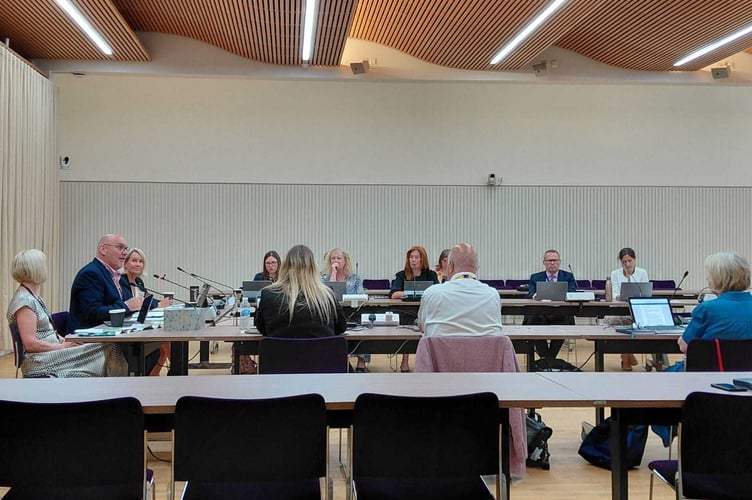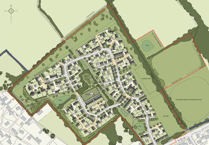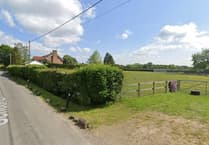Battle lines are being drawn across Hampshire and the Isle of Wight as 15 councils scrap over the future local government structure of the area.
The hostility has been caused by government proposals for local government reorganisation which seek to replace the two-tier system created in 1974.
This has already been tweaked twice, with the Isle of Wight granted unitary authority status in 1995, and Portsmouth and Southampton city councils becoming unitaries in 1997, reclaiming powers lost to the county council in 1974.
The two-tier system continues in the 11 remaining district and borough council areas, with the county council providing their larger-scale services including education.
The government has asked the 15 councils to put forward plans to replace themselves with several larger unitary authorities, each ideally covering a population of 500,000 people.
East Hampshire District Council is working alongside Hampshire County Council, with the two councils having revealed a plan for four unitary councils.
Under this, the Isle of Wight would remain as it is, Portsmouth, Havant, Gosport and Fareham would merge, and two more councils would cover vast areas.
A council on the eastern side of Hampshire would incorporate Basingstoke & Deane, East Hampshire, Hart, Rushmoor and Winchester, while in the west Southampton, Eastleigh, New Forest and Test Valley would be grouped together.

East Hampshire District Council leader Cllr Richard Millard said: “We have now reached the limits of marginal gains. The era of doing more with less is behind us. We must now do differently with what we have.”
Hampshire County Council leader Cllr Nick Adams-King added: “We have put forward a proposal for four unitary authorities designed to balance financial resilience, service quality and local identity.”
Whitehill & Bordon Community Party leader Cllr Andy Tree said: “We support the current Hampshire County Council and East Hampshire District Council proposal. It is the only proposal currently backed up with proper evidence, worked on by qualified officers.”
The district council approved the plan on July 17 but East Hampshire’s Liberal Democrats voted unanimously against it.
Liberal Democrat group leader Cllr Elaine Woodard said: “The last government structure has been in place for over 50 years - we need to ensure that local communities are protected and decision-making isn’t too remote.”
Deputy group leader Cllr Emily Young added: "The district council has long delivered essential services directly to communities, with a deep understanding of local needs at a town and village level. That local responsiveness risks being lost and there’s been no meaningful plan to protect it.”
Alton town councillor Matthew Kellermann said: “I can appreciate the logic behind grouping together Portsmouth, Havant, Gosport and Fareham. However I am not convinced of the merits in coupling the New Forest with either Winchester or Southampton.
“Likewise, I question the efficacy of combining East Hampshire and Winchester with Basingstoke & Deane, Hart and Rushmoor. It is essential that the distinct rural communities present throughout Hampshire are not simply subsumed by large urban districts.”
The plan is also opposed by 12 councils - Portsmouth, Southampton, Winchester, Isle of Wight, Basingstoke & Deane, Eastleigh, Fareham, Havant, Rushmoor, Test Valley, Hart and New Forest - which favour a five-council model.
In a joint statement, they said: “Hampshire County Council has published its case for a future of only three large-scale councils across the county. Their proposal risks creating remote, oversized councils cut off from the places and people they serve. Our communities deserve better.”
The group of 12 asked people to consider three options, the first two based on existing council areas.
Both of these have the Isle of Wight remaining as it is, and group together Basingstoke & Deane, Hart and Rushmoor in the north, and Portsmouth, Havant, Gosport and Fareham in the south.
The difference is in the middle. Option 1 proposes a large rural council in the heart of Hampshire, linking New Forest, Test Valley, Winchester and East Hampshire, with the fifth council a merger of Southampton and Eastleigh.
Option 2 puts Test Valley, Winchester and East Hampshire together, but makes New Forest what it calls a “bolt-on” to urban neighbours Southampton and Eastleigh.
Option 3 envisages boundary changes and is also opposed by New Forest because it takes away part of its historic territory by adding the waterside communities of Hythe, Fawley, Totton and Marchwood to Southampton, Eastleigh and part of Test Valley.
This option would also see the Portsmouth, Havant, Gosport and Fareham council gain land from Winchester and East Hampshire.
Rushmoor, Hart and Basingstoke & Deane are working together on the north Hampshire option.
Portsmouth, with a population of 210,000, wants to remain independent - a stance backed by 82 per cent of nearly 4,000 residents who took part in a ten-day city council survey.
But 61 per cent backed the Portsmouth, Havant, Gosport and Fareham option if Portsmouth was forced into a merger by the government to reach the 500,000 population target.
Portsmouth City Council leader Cllr Steve Pitt said: “The result speaks for itself and it’s one of the most decisive answers we’ve ever had to a survey, and by far the biggest response in such a short time.
“It was vital that we gave Portsmouth residents a say and the message to government is clear - we don’t need council reorganisation here, leave Portsmouth alone.”
Gosport Borough Council has refused to engage in the process. It said: “Plans for local government reorganisation were discussed at a full council meeting on February 5 and councillors voted to show they are against any reorganisation of the area. Whatever happens, we will work to make sure local priorities are recognised in any future plans.”
Across the rest of the area, councils are lining up behind the five-council options.
Southampton City Council said: “The councils believe this proposal for five unitary authorities means the best of both worlds: councils that are big enough to deliver services strategically, and on a scale that would enable savings, but with local understanding of communities so services can be tailored to their needs.”
Test Valley Borough Council leader Cllr Phil North said: “The idea of the whole of Test Valley going into the city of Southampton is not supported by our residents and it’s not what Southampton wants either. Our borough is made up of smaller towns, villages and rural communities. They need a local council that understands their needs.”
Cllr Keith House, leader of Eastleigh Borough Council, said: “Hampshire County Council’s plan for three giant super-councils would put more than 700,000 people under one roof, miles from where decisions really matter. That’s not local government. Councils should be big enough to do the job but small enough to care.”
Winchester City Council leader Cllr Martin Tod said: "Hampshire’s plan puts the Winchester district in with Basingstoke & Deane, Hart, Rushmoor and East Hampshire to create a council with more than 655,000 people - absolutely enormous and in no sense a local council.”
Protected from the fighting by The Solent, Isle of Wight Council leader Cllr Phil Jordan said: “The Isle of Wight already functions as a unitary authority, delivering all local services directly.”





Comments
This article has no comments yet. Be the first to leave a comment.